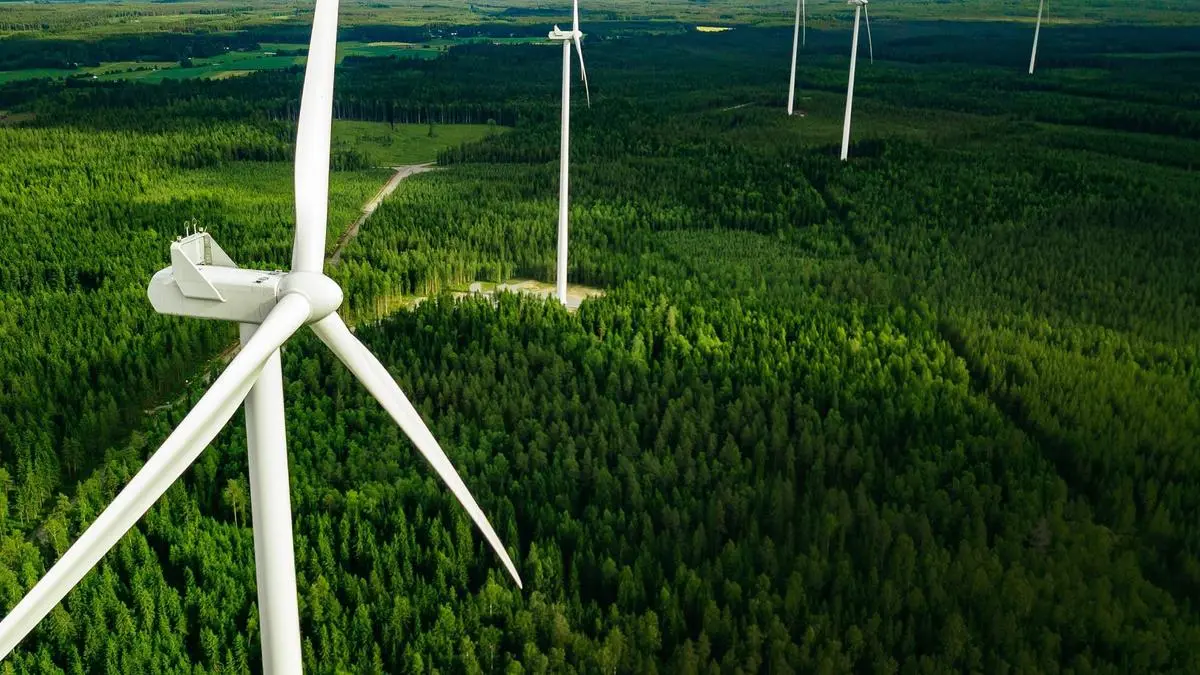FOREX
Clashes erupt in Los Angeles streets as Trump sends troops amid immigration crackdown
Some police patrolled the streets on horseback while others with riot gear lined up behind Guard troops deployed to protect federal facilities including a detention centre where some immigrants were taken in recent days.
The clashes came on the third day of demonstrations against Trump's immigration crackdown in the region, as the arrival of around 300 federal troops spurred anger and fear among some residents.
A police officer aims a weapon amid smoke during a protest against federal immigration sweeps in downtown Los Angeles, California, U.S. June 8, 2025. | Photo Credit: REUTERS/Mike Blake
By midday, hundreds had gathered outside the Metropolitan Detention Centre in downtown Los Angeles, where people were detained after earlier immigration raids. Protesters directed chants of "shame" and "go home" at members of the National Guard, who stood shoulder to shoulder, carrying long guns and riot shields.
After some protesters closely approached the guard members, another set of uniformed officers advanced on the group, shooting smoke-filled canisters into the street.
Minutes later, the Los Angeles Police Department fired rounds of crowd-control munitions to disperse the protesters, who they said were assembled unlawfully. Much of the group then moved to block traffic on the 101 freeway until California Highway Patrol officers cleared them from the roadway by late afternoon.
Demonstrators wave flags and display signs as they face off with police amid smoke during a protest against federal immigration sweeps in downtown Los Angeles, California, U.S. June 8, 2025. | Photo Credit: REUTERS/Mike Blake
The presence of the Guard was "inflaming tensions" in the city, according to a letter sent to Trump by Governor Gavin Newsom on Sunday afternoon. He formerly requested Trump remove the guard members, which he called a "serious breach of state sovereignty." "What we're seeing in Los Angeles is chaos that is provoked by the administration," said Mayor Karen Bass in an afternoon press conference. "This is about another agenda, this isn't about public safety." Trump has said the National Guard was necessary because Newsom and other Democrats have failed to stanch recent protests targeting immigration agents.
Their deployment appeared to be the first time in decades that a state's national guard was activated without a request from its governor, a significant escalation against those who have sought to hinder the administration's mass deportation efforts.
Deployment follows days of protest
The arrival of the National Guard followed two days of protests that began Friday in downtown Los Angeles before spreading on Saturday to Paramount, a heavily Latino city south of the city, and neighbouring Compton.
As federal agents set up a staging area Saturday near a Home Depot in Paramount, demonstrators attempted to block Border Patrol vehicles, with some hurling rocks and chunks of cement. In response, agents in riot gear unleashed tear gas, flash-bang explosives and pepper balls.
Los Angeles Police Department (LAPD) officers detain a demonstrator near the Los Angeles Detention Center during a protest against federal immigration sweeps, in downtown Los Angeles, California, U.S. June 8, 2025. | Photo Credit: REUTERS/Barbara Davidson
Tensions were high after a series of sweeps by immigration authorities the previous day, as the weeklong tally of immigrant arrests in the city climbed above 100. A prominent union leader was arrested while protesting and accused of impeding law enforcement.
The recent protests remain far smaller than past events that have brought the National Guard to Los Angeles, including the Watts and Rodney King riots, and the 2020 protests against police violence, in which Newsom requested the assistance of federal troops.
The last time the National Guard was activated without a governor's permission was in 1965, when President Lyndon B Johnson sent troops to protect a civil rights march in Alabama, according to the Brennan Center for Justice.
Trump says there will be very strong law and order
In a directive Saturday, Trump invoked a legal provision allowing him to deploy federal service members when there is "a rebellion or danger of a rebellion against the authority of the Government of the United States." He said he had authorised the deployment of 2,000 members of the National Guard.
Trump told reporters as he prepared to board Air Force One in Morristown, New Jersey, Sunday that there were "violent people" in Los Angeles "and they're not gonna get away with it." Asked if he planned to send US troops to Los Angeles, Trump replied, "We're gonna have troops everywhere. We're not going to let this happen to our country. We're not going to let our country be torn apart like it was under Biden." He did not elaborate.
People raise their hands as U.S. Congressman Mike Lawler (R-NY) asks who supports the protest in Los Angeles about immigration during a town hall meeting in Mahopac, New York, U.S., June 8, 2025. | Photo Credit: REUTERS/Eduardo Munoz
Trump also said that California officials who stand in the way of the deportations could face charges. A Wisconsin judge was arrested last month on accusations she helped a man evade immigration authorities.
"If officials stay in the way of law and order, yeah, they will face charges," Trump said.
Police officers detain a demonstrator during a protest against federal immigration sweeps in downtown Los Angeles, California, U.S. June 8, 2025. | Photo Credit: REUTERS/Mike Blake
Newsom called Trump on Friday night and they spoke for about 40 minutes, according to the governor's office. It was not clear if they spoke Saturday or Sunday.
There was some confusion surrounding the exact timing of the guard's arrival. Shortly before midnight local time, Trump congratulated the National Guard on a "job well done." But less than an hour later, Los Angeles Mayor Karen Bass said troops had yet to arrive in the city.
Defence secretary threatens to deploy active-duty Marines if violence continues
In a statement Sunday, Assistant Homeland Security Secretary Tricia McLaughlin accused California's politicians and protesters of "defending heinous illegal alien criminals at the expense of Americans' safety." "Instead of rioting, they should be thanking ICE (Immigration and Customs Enforcement) officers every single day who wake up and make our communities safer," McLaughlin added.
The troops included members of the California Army National Guard's 79th Infantry Brigade Combat Team, according to a social media post from the Department of Defence.
In a signal of the administration's aggressive approach, Defence Secretary Pete Hegseth also threatened to deploy active-duty Marines "if violence continues" in the region.
A person waves a Mexican flag atop a burning vehicle during a protest against federal immigration sweeps in downtown Los Angeles, California, U.S. June 8, 2025. | Photo Credit: REUTERS/David Ryder
About 500 Marines stationed at Twentynine Palms, about 200 kilometres east of Los Angeles were in a "prepared to deploy status" Sunday afternoon, according to the US Northern Command.
Vermont Senator Bernie Sanders said the order by Trump reflected "a president moving this country rapidly into authoritarianism" and "usurping the powers of the United States Congress." Former Vice President Kamala Harris, who lives in Los Angeles, said the immigration arrests and Guard deployment were designed as part of a "cruel, calculated agenda to spread panic and division." She said she supports those "standing up to protect our most fundamental rights and freedoms." House Speaker Mike Johnson, a staunch Trump ally, endorsed the president's move, doubling down on Republicans' criticisms of California Democrats.
A man waves a Mexican flag as smoke and flames rise from a burning vehicle during a protest against federal immigration sweeps, near Los Angeles City Hall in downtown Los Angeles, California, U.S. June 8, 2025. | Photo Credit: REUTERS/David Swanson
"Gavin Newsom has shown an inability or an unwillingness to do what is necessary, so the president stepped in," Johnson said.
Published on June 9, 2025



































